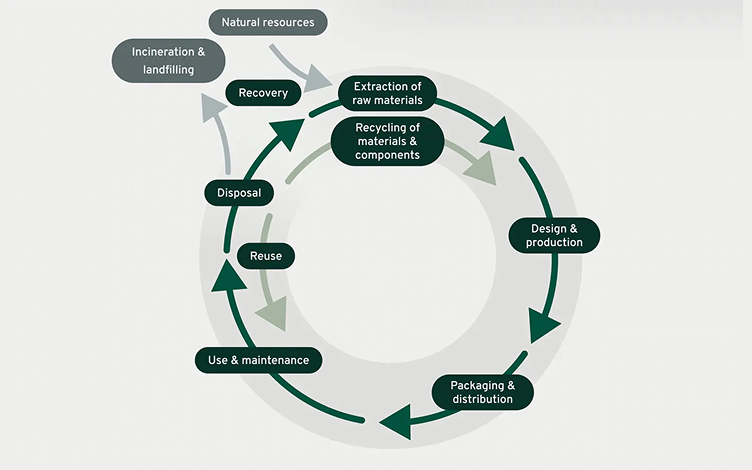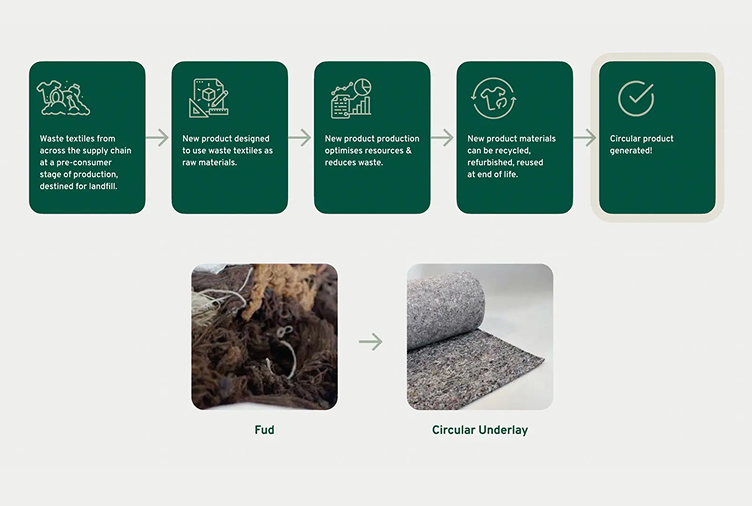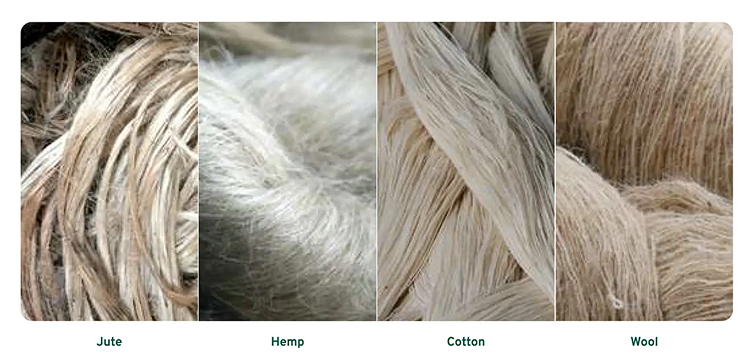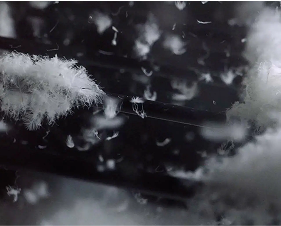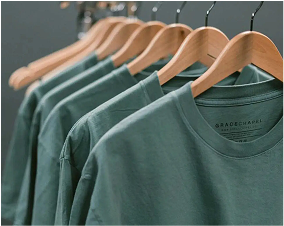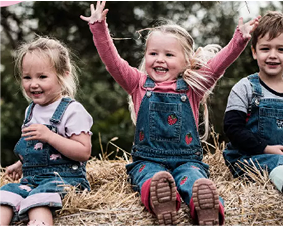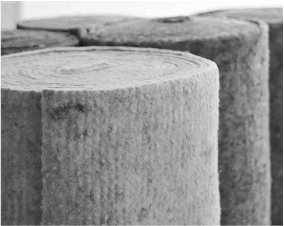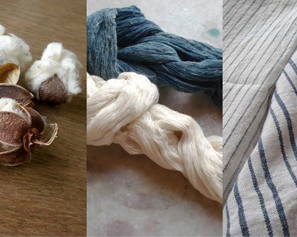Creating a Circular Product with Fairbank Textiles
Case Study – Circular Source℠
Teesta Mukherjee
ESG Solutions Director

WHAT IS CIRCULAR PROCUREMENT?
A circular method of supply chain management has been defined as:
A circular product is designed and produced according to circular economy principles. This means the capabilities of repair, reuse, refurbishment, and recycling at the end of life are built into the product’s design and manufacturing process. It also includes an emphasis on using natural materials that can ultimately return to the earth as bio feedstock.
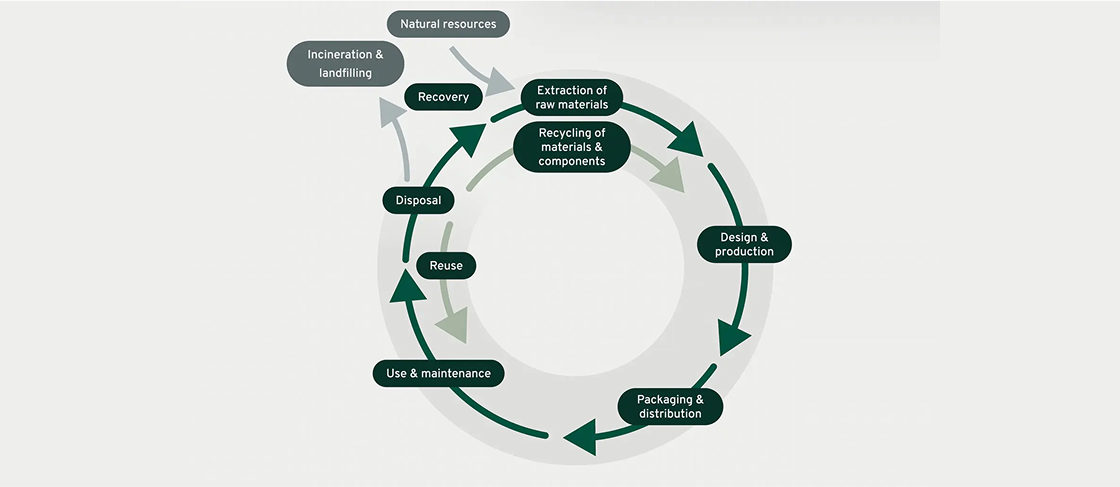
Considering the full lifecycle of a product is key to enabling a circular approach. Every stage of the design and production process must integrate circular economy principles.
Circular Thinking Solutions
Circular thinking is needed in the product design phase to come up with solutions that enable the creation of a product with a full circular lifecycle.
The circular economy principles of:
- Designing out waste and pollution
- Keeping materials and products in use
- Regenerating natural systems
CE principles need to be considered and integrated into the product creation at the initial design stage. All stages of product development need to be included from raw material sourcing, manufacturing processes, to the afterlife disposal of the product.
Circular Principles in Action: Fairbank Textiles Carpet Underlays
- Fairbank Textiles implemented these principles by designing their carpet underlay product to utilise waste textiles, creating a new, high-quality, hard-wearing, and economical product.
- The underlays are made using a blend of recycled textiles: ‘fud’ (wool waste), jute (a natural material), and recycled synthetics.
- These waste materials, originally destined for landfill, are salvaged and regenerated into new circular products.
- The resulting underlay products are 100% recyclable at the end of their life, completing the circular process.
Circular Product Lifecycle at Fairbank

KEEPING IT NATURAL
Natural materials are blended with recycled textiles within the production process, to create products with greater durability that are easily recycled and biodegradable at the end of their life, ultimately feeding back into the regeneration of natural systems.
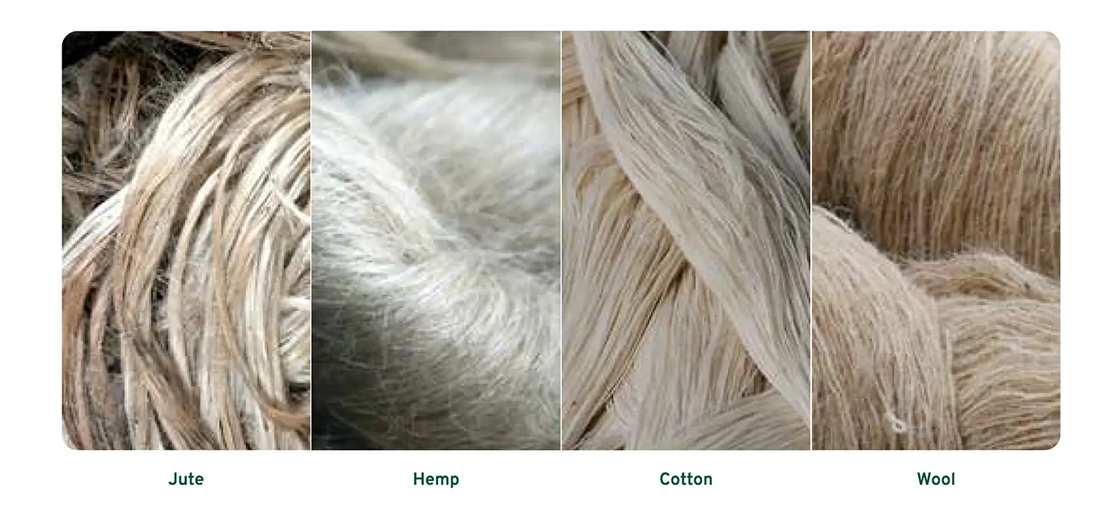
Collaboration: Fairbank Textiles x ProcureCircular
ProcureCircular supports business to the transition of a circular supply chain. In doing so organisations improve the environmental footprint of products and create a higher sustainable footprint across the industry.
ProcureCircular source and supply Fairbank Textiles with the raw material ‘fud’ (wool waste), which otherwise would’ve been thrown into landfill as waste from the production processes of other businesses. Collaboration between businesses, facilitated via ProcureCircular enables materials to be discovered, procured and kept in recirculation.






